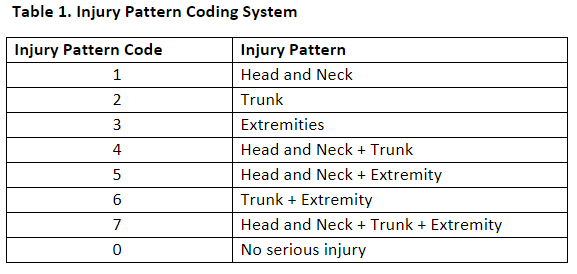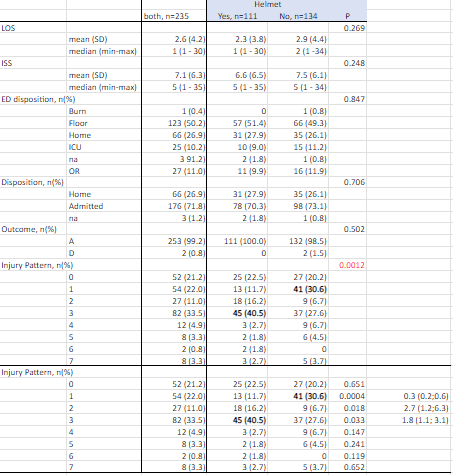Emergency Medicine 12
Session: Emergency Medicine 12
545 - Serious Injury Patterns in Pediatric All-Terrain Vehicle Accidents
Monday, April 28, 2025
7:00am - 9:15am HST
Publication Number: 545.6868
Kaitlyn M. May, Akron Children's Hospital, Cuyahoga Falls, OH, United States; Seth W. Linakis, Akron Children’s Hospital, Akron, OH, United States; Miraides Brown, Akron Children's Hospital, Akron, OH, United States
- KM
Kaitlyn M. May, DO
Fellow
Akron Children's Hospital
Cuyahoga Falls, Ohio, United States
Presenting Author(s)
Background: It is estimated that children under the age of 16 make up anywhere from 14-18% of all-terrain vehicle (ATV) operators but their burden of injury is disproportionately higher as they account for up to almost 60% of all ATV injuries despite numerous agencies recommending against their use. Existing studies show that helmets decrease morbidity and mortality from intracranial injuries but do not reduce the overall risk of serious injuries.
Objective: This study seeks to describe the characteristics of severe non-head injuries in pediatric ATV crashes and examines whether helmeted patients are less likely overall to suffer a major injury of any type than unhelmeted patients.
Design/Methods: A retrospective review of all children presenting to a level 1 pediatric trauma center following an ATV accident was done over a five-year period from May 1, 2017 to April 30, 2022 using an internal trauma registry database. ICD-10 codes were used to classify patients into serious injury patterns including head and neck, trunk, extremities or a combination of the three (Table 1).
Results: 263 patients were included with a mean (SD) age of 11.4 (3.9) years, were predominately male (72.2%) and a majority required admission (71.9%). Helmet status was available for 245 patients. 111 (45.3%) patients were helmeted and 134 (54.7%) were not. There were no significant differences between length of stay, injury severity score or ED disposition between the two groups. There was not a significant difference in the proportion of patients who did not have any serious injuries in the helmeted (22.5%) and unhelmeted (20.2%) groups (Table 2). Serious extremity injuries were the most common injury pattern overall (33.5%) followed by head and neck injuries (22.0%). The most common injury pattern in the unhelmeted group was head and neck injuries (30.6%) compared to extremity injuries in helmeted patients (40.5%).
Conclusion(s): This study demonstrates that overall serious injury rates do not significantly differ between helmeted and unhelmeted groups. Even children who wear protective gear can still be severely injured. Less than 25% of children injured in an ATV accident do not sustain a serious injury regardless of their helmet status.
Table 1: Injury Pattern Coding System

Table 2: Clinical Characteristics and Helmet Status


